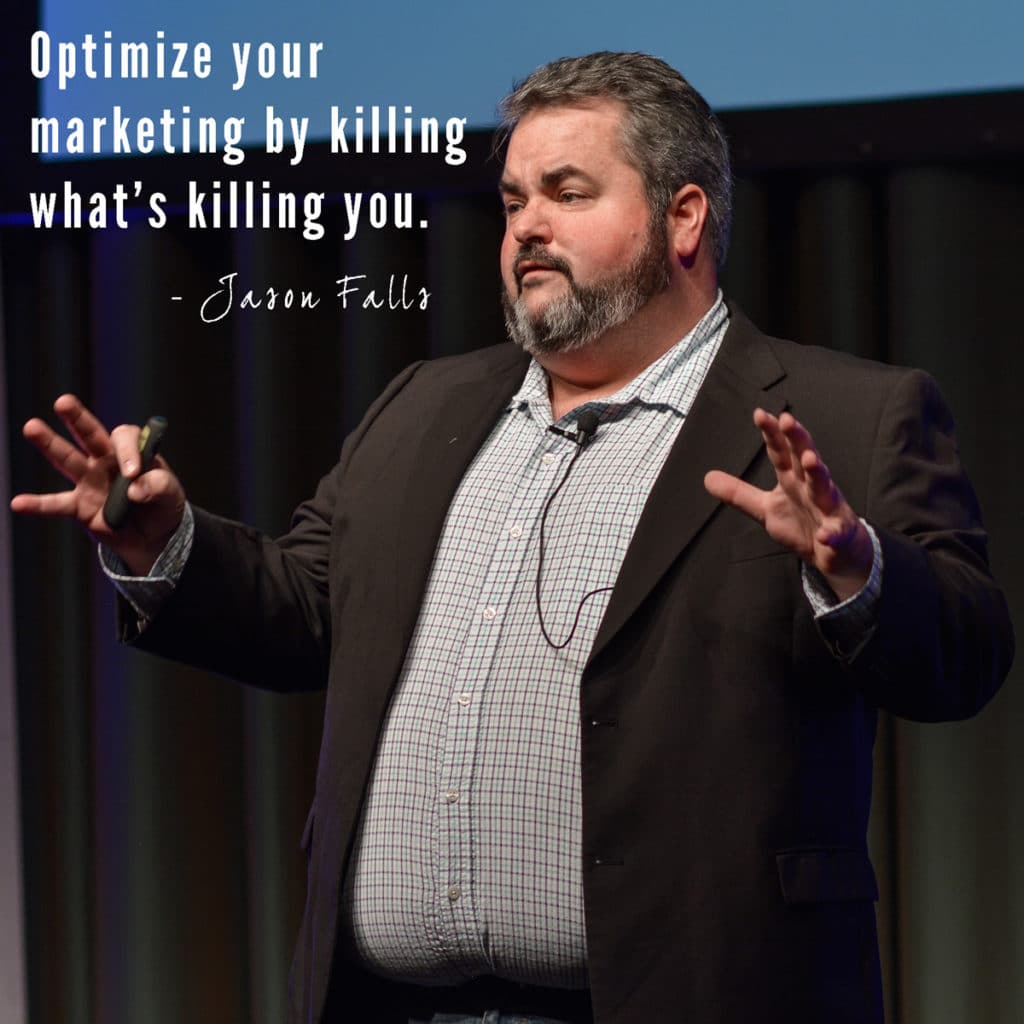We live in a sea of noise. Whether it’s the cacophony of it that is our social media feeds or the multitasking nightmare of our daily to-do list, there never seems to be enough time to get it all done, to take it all in.
This is also true with marketing. In an effort to be integrated and reach consumers on every possible touchpoint, we spread ourselves too thin. We have dozens of campaigns, projects and channels we’re managing. We have multiple goals and objectives, dozens of sub-segments of audiences and so many ways to measure success that we can’t decide which are meaningful.
It’s time to stop the noise. It’s time to optimize our input, not just our output.
The 5% Method to Optimize Your Marketing
 I challenge you to do this:
I challenge you to do this:
- Make a list of all your marketing projects.
- Prioritize that list in terms of how effective they are at driving your overall business goals. So, make sure that you judge them on a combination of volume (reach) and effectiveness (conversion rates).
- Consider your list, and identify the bottom 5% of the projects. If you have 10 projects, draw a line between No. 9 and No. 10. If you have 100, draw a line between No. 94 and No. 95 and so on.
- Tomorrow morning, kill the projects under the line. Kill them. Dead.
- Divert the resources used on those projects to any project in your top five percent that needs a little extra. Maybe they need more money. Perhaps they need more personnel or just additional time spent on them, but redistribute those resources to the successful projects that could use a boost.
It’s a process of turning the 80-20 rule on its head. If 80 percent of your revenue comes from 20 percent of your audience, but 80 percent of your time is spent on the 20 percent that doesn’t pay off as well, the 5% Method is an effort to fix that.
In order to fix it, however, you can’t just do it once. Do the same thing again in 30 days, then again in 60, and so on. After 6-9 months, you’ll start to see a huge difference in your marketing. You’ll see the most effective measures becoming more effective. You won’t waste time on the ones that aren’t working, and you’ll have a repeatable method of weeding out the ones that hog all of your resources but don’t produce.
I only have two exceptions to this method. The first is to provide for the testing and iteration of new projects. Give a project at least three months before it qualifies to be cut, regardless of whether it falls in the bottom 5% or not.
The second exception is the gut feel. If you use this method for more than 6-9 months in most organizations, you start to cannibalize good projects. You have to know when to stop cutting things, then when to resume. The process will work for 6-9 months, but then you cease cutting anything until you begin to sense you’ve got a new set of resource-heavy/weak results projects to go through.
Give it a try. See how it works for you for one month. My bet is you’ll be happier with your inputs and your outputs.
And of course, come back and share your results in the comments!

